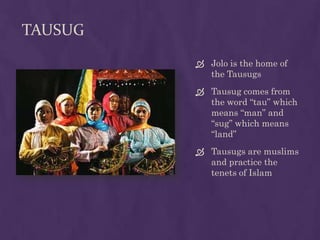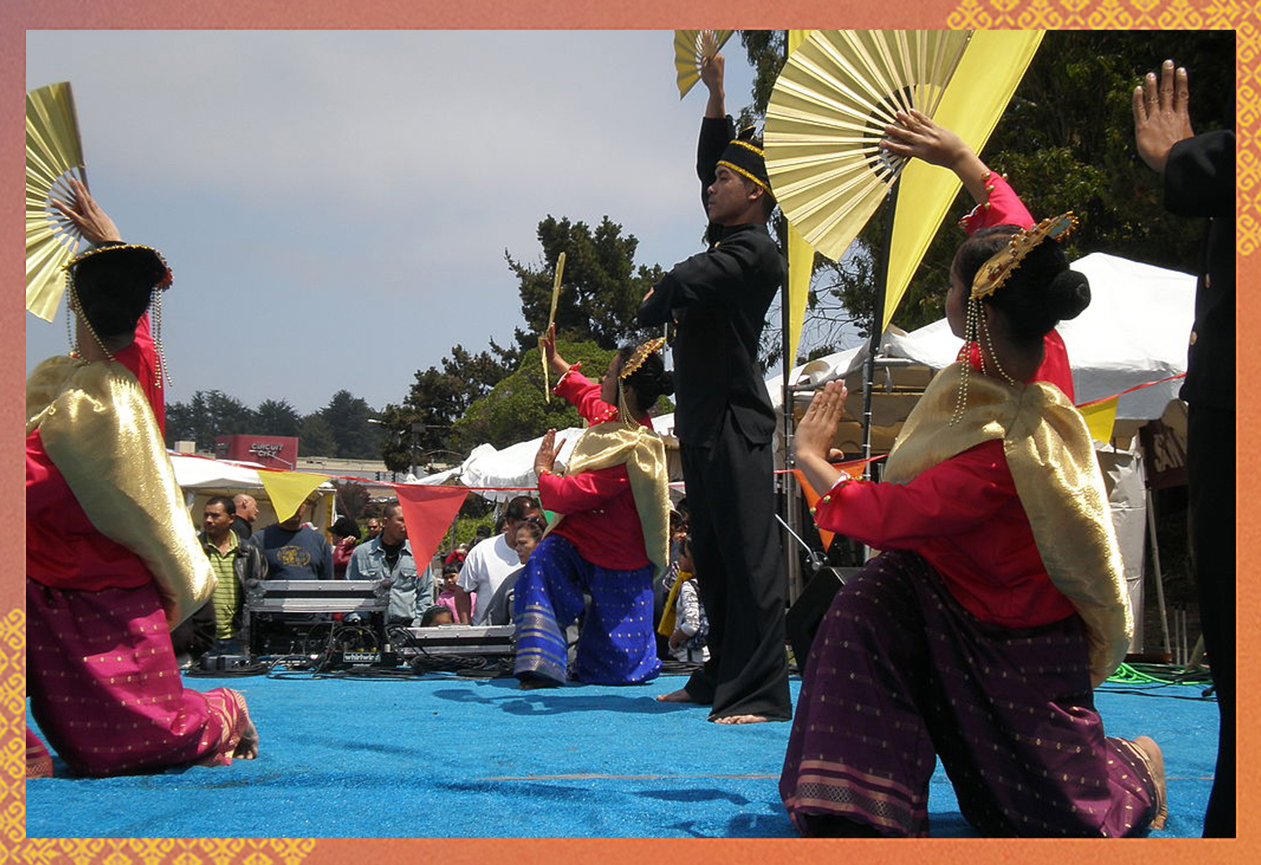4 Simple Techniques For Tausug Philippines
Table of ContentsTausug Philippines Fundamentals ExplainedSome Ideas on Tausug Philippines You Need To KnowThe Of Tausug PhilippinesFascination About Tausug PhilippinesHow Tausug Philippines can Save You Time, Stress, and Money.10 Easy Facts About Tausug Philippines Explained
Anne's perceptions of the Pangalay demonstrate how, in a location where a number of societies exist side-by-side, respect for tribal possession of a dance is not incompatible with a gratitude for and also a feeling of pride in the collective corpus of dancings as one practice, on a national level. Dance is a task so prevalent in Philippine culture that, paradoxically, it is often taken for granted.
There is no denying that Reyes-Aquino deserved her Nationwide Artist Award in Dance for the collection of descriptions of all the dances that appear in her six-volume work (Aquino 1953), however I maintain that further research is needed to enhance this collection by updating, trimming, broadening, as well as remedying, where essential, specifically when it involves the category as well as classifications of dances.
There is much information therein, certainly, yet efficient reorganization as well as circulation of this information requires the work of much more scholars. I keep in mind, however, that this process of modification is not without its political problems among dancing scholars and professionals. Tausug Philippines. As an example, while looking into the Pangalay in the resources and also 2 municipalities of Tawi Tawi, an island province within the Sulu archipelago, Santamaria uncovered that the locals of this province differentiated the Pangalay from the Igal.
The Definitive Guide to Tausug Philippines
Not remarkably, reactions from Amilbangsa's team to this case were hostile, accusing Santamaria of negating Amilbangsa's original study as opposed to watching it as the exploration of new knowledge. As the recognized specialist in Pangalay, it was assumed that Amilbangsa might not be incorrect, in the very same manner that Aquino's research study is believed to be unquestionable.
Bajau youngsters learning the Igal in Sempornah, Sabah. Picture by Hanafi Hussin. Amilbangsa's advocacy for the Pangalay is worthwhile in that she seeks to maintain the practice alive so that future generations will certainly keep doing this age-old form that was exercised prior to individuals who danced it were converted to Islam.
Clearly, it would certainly be advantageous if she could update her research or allow others to proceed the study for her. My account of troubles with the classification and categorization of dances in the Philippines as well as their documents seeks to show exactly how the advancement of a nationwide heritage is not without contestation, as numerous cultural teams battle to preserve their identity as well as freedom on a tribal level within the unified field that is nationhood.
The smart Trick of Tausug Philippines That Nobody is Talking About
On the lower footer of the internet site, a copyright is indicated from 1999-2013, although this might show the length of time that the Alun Alun Dance Circle has functioned, as specified on the site's profile web page: http://pangalaydance. com/the-alun-alun- dance-circle. It would be secure to claim that the article "The Pangalay Dancing Design" image source might have been uploaded to the internet site as very early as January 2007, which is the earliest date of the archives of articles on the site, and also written before after that.
gov.ph, it is unclear where an upgrade of this report can be found. Reviews of the background of Philippine dance are located in Basilio Esteban Villaruz's Sayaw: An Essay on Philippine Dancing, which was published as a short monograph by the Cultural Center of the Philippines (CCP) in 1989, after that consisted my explanation of in the Tuklas Sining collection (1991 ).
In some areas, the motion of such individuals has actually drastically altered the ethnic structure. Such holds true of southern Sulu, the islands comprising the province of Tawi-Tawi. This paper is a discussion of current populace activities in the Sulu Islands, and how these may be connected to the society background of the Sama individuals, the earliest residents of Sulu (*).
The Buzz on Tausug Philippines

Design as well as Neighborhood Preparation. There are 3 sorts of Mranaw homes: the lawig (cottage), mala-a-wali (huge residence), and also the torogan or genealogical residence of the datu. their website Some Mranaw houses have messages which rest on the rounded boulders; these "drifting structures" protect against the frameworks from falling down throughout earthquakes (Peralta, 1975: 28-31).
It stands thirty to 220 centimeters in the air, resting on 9 to twelve bamboo or wood posts. A fenced porch acts as the front of your home; the kitchen, which is fifty centimeters reduced than the frameworks, is at the back. Tausug Philippines. The text homes the resting area, which increases as a living and also workplace in the early morning.
The 9-Minute Rule for Tausug Philippines
The widowed line floor covering of your home is of split bamboo connected with rattan. Sculpted breasts, head boards, or mosquito screens separate the interior into the resting and non- resting locations. Covered with a riyara woven mat, rice-stalk packages work as bed cushions, the head as well as foot of which are outlined with pillows.
The roofing system of the mala-a-walai is constructed from thick cogon grass protected on bamboo frameworks by rattan. Scratched bamboo posts server as the stairways, which are put at the front and rear of your house (Alarcon, 1991: 65-66). The finest example of Mranaw style is the torogan, which showcases the most effective of Mranaw okir (essentially, "carving").
